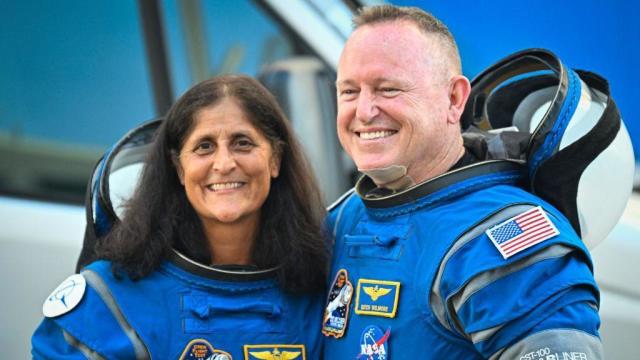SpaceX to Rescue Astronauts Stranded on ISS in 2025
3 min read

NASA has announced that SpaceX will facilitate the return of two astronauts, Sunita Williams and Barry Wilmore, who have been stranded on the International Space Station (ISS) for over two months. The astronauts, who were originally on an eight-day mission launched on June 5, 2024, will now remain in orbit for approximately eight months before returning to Earth in February 2025 aboard a SpaceX Crew Dragon spacecraft.
The mission initially intended for Williams and Wilmore to travel to the ISS on Boeing’s Starliner spacecraft, which has encountered significant technical issues. Problems such as helium leaks, which affect fuel propulsion, and malfunctioning thrusters have plagued the spacecraft. As a result, Boeing’s Starliner will return to Earth “un-crewed,” leaving the astronauts’ return to be managed by SpaceX.
Boeing and SpaceX both received substantial contracts from NASA to provide commercial space flight services. Boeing’s contract is valued at $4.2 billion, while SpaceX, founded by billionaire Elon Musk, was awarded $2.6 billion. To date, SpaceX has successfully completed nine crewed missions for NASA, alongside various commercial flights. In contrast, Boeing’s mission with Starliner represents their first crewed flight attempt.
Boeing and NASA engineers have been diligently working to resolve the issues with the Starliner spacecraft. This effort has involved extensive testing and data collection both in space and on the ground, aiming to identify the root causes of the problems and ensure a safe return for the astronauts. Despite these efforts, it has been decided to extend the astronauts’ stay on the ISS.
NASA Administrator Bill Nelson addressed the situation at a press conference, emphasizing the inherent risks of space flight. He acknowledged that even routine missions carry risks, and that safety remains a top priority. “Space flight is a risk, even at its safest and even at its most routine, and a test flight, by nature, is neither safe nor routine,” Nelson stated. “Our core value is safety and it is our north star.”
The revised plan involves extending Williams and Wilmore’s stay on the ISS until February 2025. This adjustment allows SpaceX to prepare for its next Crew Dragon launch, scheduled for the end of September. The upcoming SpaceX mission was originally set to carry four astronauts but will now transport only two, creating space for Williams and Wilmore to return to Earth with the crew.

Both astronauts, who have previously completed two extended space missions, are well aware of the risks associated with their extended stay and the delay. NASA has confirmed that Williams and Wilmore are fully supportive of the revised plan and will continue to conduct scientific research, perform space maintenance, and possibly engage in spacewalks during their extended stay.
Boeing’s Starliner has faced several delays and technical setbacks over the years, which have further complicated its development. Previous un-crewed flights of the spacecraft also encountered issues. In response to the current situation, Boeing has reiterated its commitment to safety and is working to ensure a successful un-crewed return mission for Starliner.
In summary, while Boeing’s Starliner faces continued challenges, SpaceX will step in to ensure the safe return of the stranded astronauts. The collaboration between NASA, Boeing, and SpaceX highlights the complexities and risks inherent in space travel, underscoring the importance of safety and resilience in the pursuit of space exploration.